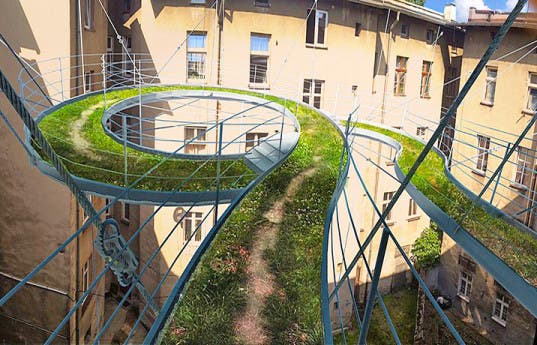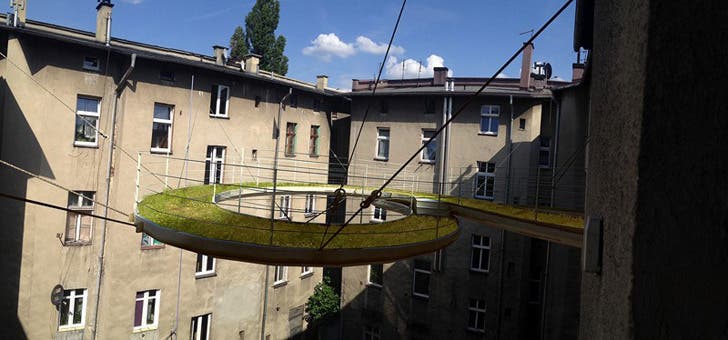For all the developments in modern architecture, balconies have remained generally unchanged. This is why I was really pleasantly surprised to stumble upon this alternative – it’s not groundbreaking, but it adds a nice, green touch and generally seems very pleasant.
The Zalewski Architecture Group has designed this meandering alternative to a balcony which allows inhabitants to take a stroll in the grass way outside the limits of the building – not only beautifying the area, but also making use of previously unused space.
Inspiration reportedly hit the architect while he wanted to take a walk outdoors, but the natural environment was simply too far away – you have to go downstairs and then to the park… it just takes time. With this path, you get to enjoy a walk in the grass whenever you want. Sure, it’s not like a park or a forest, but I’d say that walking above the buildings more than makes up for that. Instead of form following function, the shape of the structure is whimsical, basically luring you to take a walk on it.
Despite its appearance, the green pathway is actually very stable. The thin wires hold it quite sturdily, and ensure that little extra shading is added. Two people could barely walk side-by-side on the pathway, which is only 80 cm wide.
All in all, it seems like a fun and interesting idea, but is it actually worth it? Could we start designing green pathways on the edges of our buildings, or maybe even something more ambitious, like a communal garden? What do you think?
Image credits: Zalewski Architecture Group









